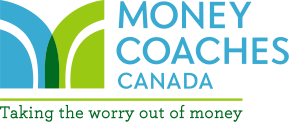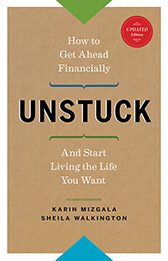By Steve Bridge, B.A. (Hons.), CFP®
 Investing is one of the most popular personal finance topics out there. And why shouldn’t it be? Bitcoin! Tesla! NFTs! Buy! Sell! Hot stock tips! These are so much more exciting than budgeting, taxes and insurance. And investing is a great water cooler or dinner party topic; lots of people have success stories of their aunt or brother-in-law who bought Apple or Amazon or weed stocks when they were at bargain basement prices. It sounds so easy, but the reality is a different story. Successful do-it-yourself (DIY) investing requires a combination of technical savvy, behavioural discipline, and a broad range of related knowledge.
Investing is one of the most popular personal finance topics out there. And why shouldn’t it be? Bitcoin! Tesla! NFTs! Buy! Sell! Hot stock tips! These are so much more exciting than budgeting, taxes and insurance. And investing is a great water cooler or dinner party topic; lots of people have success stories of their aunt or brother-in-law who bought Apple or Amazon or weed stocks when they were at bargain basement prices. It sounds so easy, but the reality is a different story. Successful do-it-yourself (DIY) investing requires a combination of technical savvy, behavioural discipline, and a broad range of related knowledge.
For the record, investing is never the first thing I work on with my clients. The investment part of a financial plan is like the last four pieces of a 500-piece jigsaw puzzle – once everything else is in place (goals, cash flow, retirement planning, tax planning), the investment strategy (asset allocation, implementation, etc.) is pretty straightforward.
There are two main types of DIY investors out there. The first type (stock pickers) picks and chooses individual securities/companies, and the second type (indexers) holds index funds (funds that track stock and bond indexes like the S&P 500 or the Toronto Stock Exchange). Within each of these there are two subgroups – one that actively buys and sells their holdings and the other that ‘buys and holds’, rebalancing to their target asset allocation (stocks, bonds, cash) once or twice a year.
All types of DIYers need to:
- Determine the appropriate asset allocation for their personal circumstances
- Be technically savvy enough to open a self-directed brokerage account and to place a trade (understanding market orders, limit orders, ticker symbols, etc.)
- Have a good understanding of investment risk and be able to objectively – without bias – assess the risk of any current or proposed investment holding, and of the overall portfolio.
- Understand how much should go into each account (RRSP, TFSA, non-registered, corporate) to minimize tax over the short and long-term
- Have the time, interest, and energy to devote to investing
- Have the discipline to rebalance their portfolio once or twice a year or when investments deviate from their target allocation (which may involve selling winners and buying losers)
- Have the temperament to not sell (and if possible, buy) during market drops. The 2008/2009 crash and subsequent withdrawals proved the vast majority of investors struggle with this.
- In retirement, determine how best to create a steady stream of income from their various investment accounts (the decumulation phase). An advice-only planner can provide serious value here.
The best investors:
- Keep it simple. Investing does not have to be complicated.
- Keep their fees low (see below)
- Resist the urge to tinker or ‘play’ with their investments. As Warren Buffett said, “Investing should be dull. It shouldn’t be exciting. Investing should be more like watching paint dry or grass grow. If you want excitement, take $800 and go to Las Vegas.” Another one of my favourite quotes is : “An investment portfolio is like a bar of soap: The more you touch it, the smaller it gets”.
- As confident as one might be about a particular investment, everyone gets it wrong sometimes. Don’t put all your eggs in one basket.
That sounds like a lot of work! What are the advantages to all of this?
- You have control over your money. No one cares more about your money than you do and managing it yourself means you know what is invested where… and most importantly, why.
- Potentially lower fees. The compounding effect of investment fees can be devastating over the long-term and are one of the most important things to pay attention to when it comes to investing. Because the effects of high fees aren’t obvious, you may never know that you could have retired a few years earlier, spent more money during your retirement, or left thousands more to your kids or other beneficiaries. Choosing a low-cost diversified index portfolio can be done for a 0.25% fee (also known as the Management Expense Ratio or MER), which is much lower than it could be when compared to having someone else managing your money.
As you can see, there is a lot that goes into being a DIY investor. There are not only the technical and behavioural aspects of investing, but the planning part as well. Investing with no plan just for the sake of investing is putting the cart before the horse. An end goal and a proper financial plan need to be in place first in order to implement the optimal investment plan.
A few of the questions that need to be answered prior to investing include:
- Why are you investing (what is/are your goal(s))?
- What is your time horizon?
- What is your starting point?
- How much do you need to invest?
- What are your assumptions regarding future investment returns, and are they realistic?
- If you are investing for retirement, as most people are, what is your target annual spending in retirement, and what are your projected sources of income in retirement?
Whether you are investing on your own or not, make sure you have the answers to these questions first, as doing so will greatly increase your chances of ending up where you want to.
What do you think? Are you a DIYer or thinking of becoming one? Let us know in the comments below!



Great blog Steve!
This quote is particularly good- “The investment part of a financial plan is like the last four pieces of a 500-piece jigsaw puzzle – once everything else is in place (goals, cash flow, retirement planning, tax planning), the investment strategy (asset allocation, implementation, etc.) is pretty straightforward.”
Over the years, we’ve talked with many DIY investors who tick all the boxes in terms of the interest, skill and time but have decided to delegate a portion of their investment management as they’re in their later years and their significant other doesn’t have the same interest in DIY investing or their DIY portfolio has grown to a size that they’re no longer comfortable with the full burden of responsibility.
Thanks for reading, Chris!
Delegating the investing part of a financial plan can be one of the smartest things ANYONE does, no matter what their age.
Your firm is definitely one of the ‘good guys’ when it comes to the Canadian investment landscape, keep up the great work!
Steve
This sounds exactly like me. I am the chief engineer of family finances and investments with no back up.
Such a helpful blog post! I have been struggling with learning how to be a DIY investor and this crystallized a couple of things for me. Thank you.
Hello Monisa,
Thank you for you the feedback and I am really glad you found it helpful!
I wish you success no matter which investing path you decide is best for you.
Warmly,
Steve
Excellent Blog Steve. As you know I am a DIY investor. But its a heck of a lot of work just keeping an eye on it. I have it all on Excel and update quarterly and try to stay on top of the news on all my equities and an eye on the market too. The last few days I have been toggling values into taxtips.ca and its 2021 tax model. Its a lot of work. I learned how to estimate the capital gains I need, or RRSP withdrawls to stay below the OAS clawback threshold. Its a great model to work off of. But a lot of work. I must have printed 8-10 scenarios. Its tax planning too. A lot of work but Im retired so I believe I have no excuse to hire an advisor to manage my accounts for me. A top business journalist told me that most advisors are mediocre at best and that I would need a much higher level guy to help me and he would also need to help in roles like you do to justify the high fees but I am not prepared yet to be paying $ 40K-$ 80K for mediocre help.
Hello SO,
Thanks for reading and sharing your approach.
You sound really on top of your investments and finances in general, kudos. It also sounds like you enjoy many aspects (playing with the numbers, looking at OAS clawback, monitoring stocks, etc.) of being a DIY investor and managing your finances, which is quite beneficial; we’re obviously so much more likely to be willing to put the time into something if we enjoy it.
Sharing what you do will give others an idea of at least part of what is involved in being a DIY investor. Thanks again!
Steve
Steve, this is a very informative article and l hope all CFP’s and R.F.P.s would aspire towards. It’s highly doubtful that the general public can create a financial plan, given the breath of knowledge required. But you certainly laid out the process as perfectly as anyone. And you touched on several key issues, such as preparing a plan prior to choosing what the investments are, and not tinkering with it afterwards, which the exception of rebalancing one’s portfolio. I tell people that constructing a portfolio is like building a puzzle once the pieces are picked leave it alone, because if you sell say US equities in a panic, where do these funds go when the rest of the pieces form the remainder of your asset mix?
Anyway, great job from someone who’s retiring after 29 years.
Congratulations on your retirement, Terry!
Knowing someone with your experience and knowledge is in agreement with what I wrote is fantastic. I LOVE your puzzle analogy, I may borrow that one.
As far as having the knowledge to build your own financial plan, I concur. I think it’s akin to rebuilding your own car engine. Leave it to a professional who knows what they’re doing!
Best,
Steve
This is timeless advice Steve. So much is made about how “simple” it is to DIY, yet it is often not that easy. I’ve heard that a significant percentage (more than 50%) of online platform accounts at one bank discount brokerage that get opened, are neither funded, or invested. Accounts get opened, and then money is neither deposited, or if it is, it sits in cash. Life gets in the way…
Thanks for commenting, David!
Indeed, any Do-It-Yourself investment plan will fall apart if one doesn’t actually “Do It”. There’s a ton of investment information out there, and it’s understandable how a novice investor may feel overwhelmed and suffer from “analysis paralysis”. It is certainly helpful to have an experienced guide to help navigate what for many is uncharted water.